This is the kind of bread that makes a sandwich exceptional.
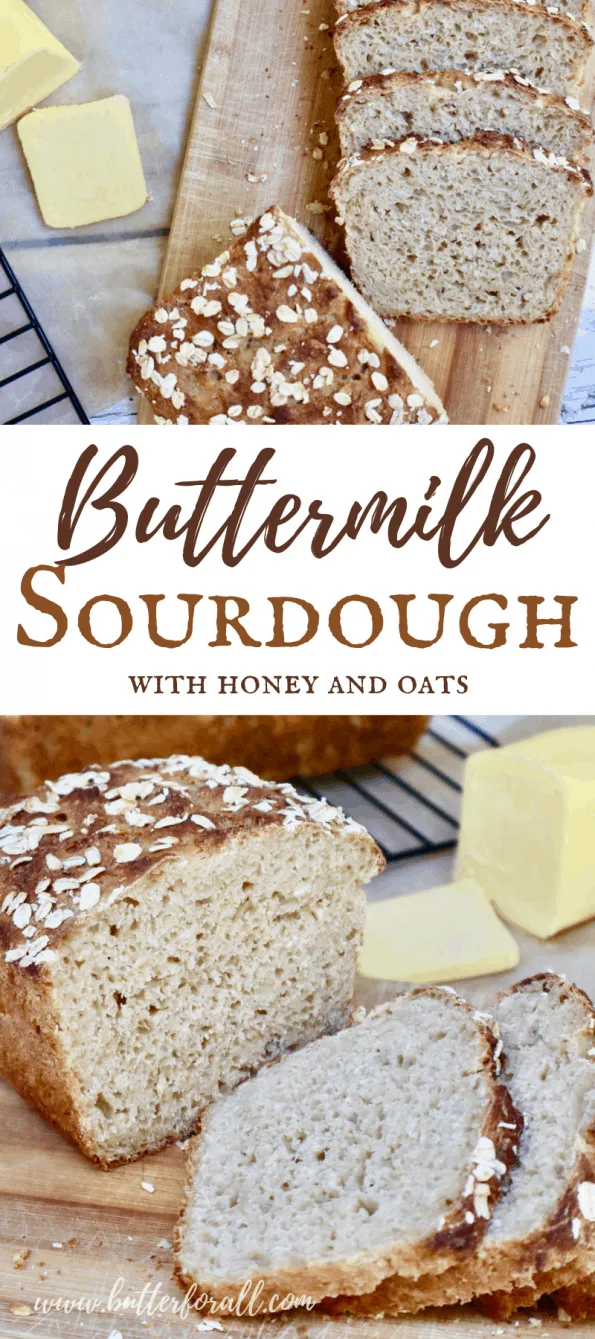
When I set out to develop this recipe I spent a lot of time testing different shaping techniques. I finally settled on a beautiful and functional sandwich loaf. Baking this rich bread in a loaf pan really supports the hearty oat-filled dough.
The texture is chewy with rolled oats and has a semi-open soft crumb. It slices like a dream for making sandwiches and toast!
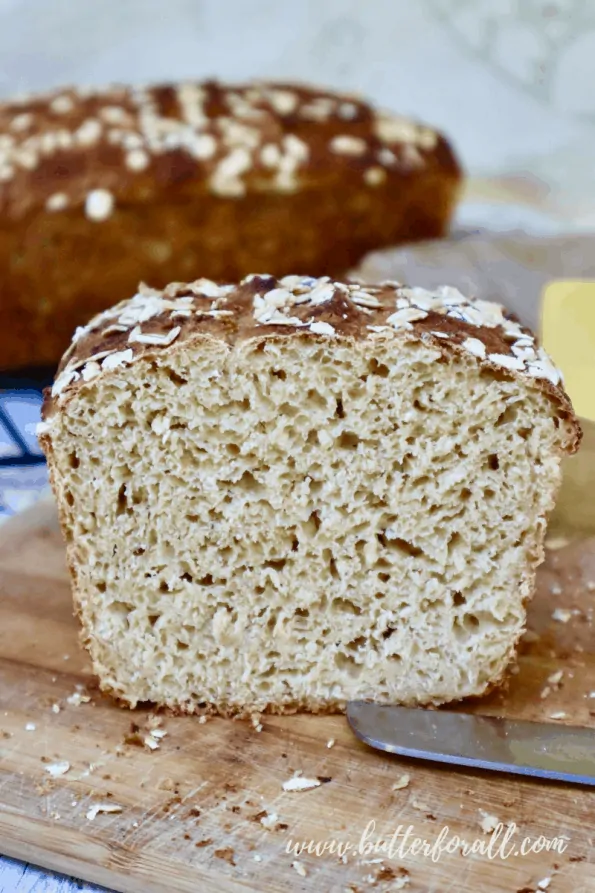
Buttermilk: The Special Ingredient
I really only started making this bread because I was churning so much cultured raw butter that I needed a use for my very tangy and delicious raw buttermilk. Buttermilk is the only hydrator in this recipe, besides the sourdough starter, and it adds a richness, more protein, and a lot more tang to this dough.
The tangy buttermilk flavor is balanced perfectly by the soft mild oats and earthy sweetness of the honey.
Because your buttermilk will undoubtedly be a different consistency than mine, I am including a range of measurements. Start slowly with 75% of the buttermilk, then if needed add in more a little at a time until all the dry ingredients are moistened sufficiently.
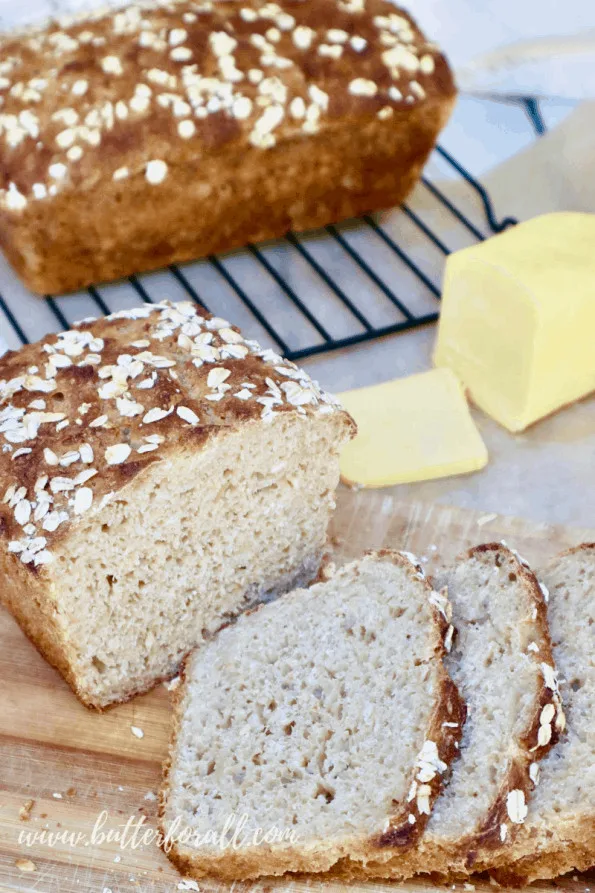
Two Loaves of Buttermilk Sourdough Are Better Than One
This recipe yields two standard sandwich-sized bread loaves. Perfect for the big and busy family who makes a lot of sandwiches, breakfast toast, and French toast. This bread also freezes really well so you can have one prepared in advance, or one for you now and one to give away!

Sweet and tangy buttermilk sourdough with honey and oats is the sliceable sandwich loaf you've been dreaming about! 300 grams of bread flour and 300 grams of whole wheat flour can be substituted for the sifted whole wheat.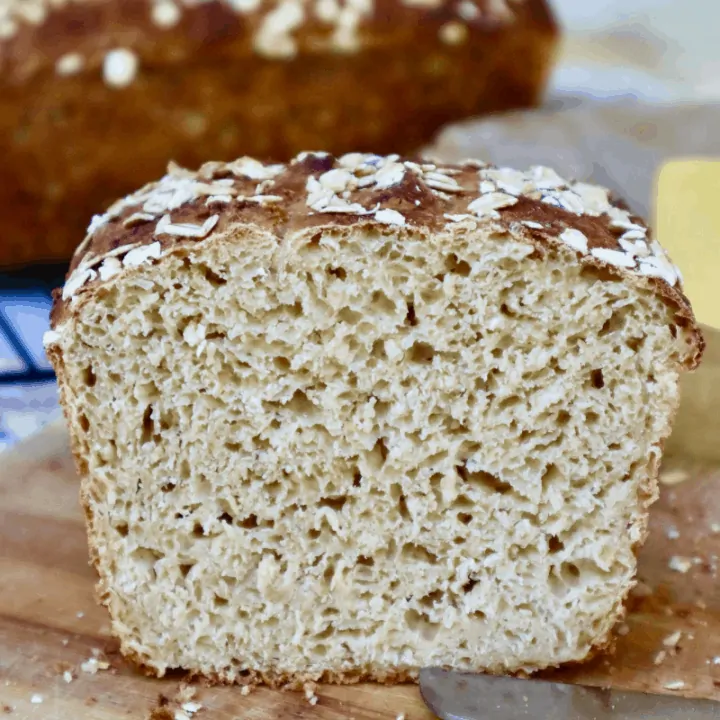
Buttermilk Sourdough Bread With Honey and Oats
Ingredients
Instructions
The Night Before
The Next Morning
Notes
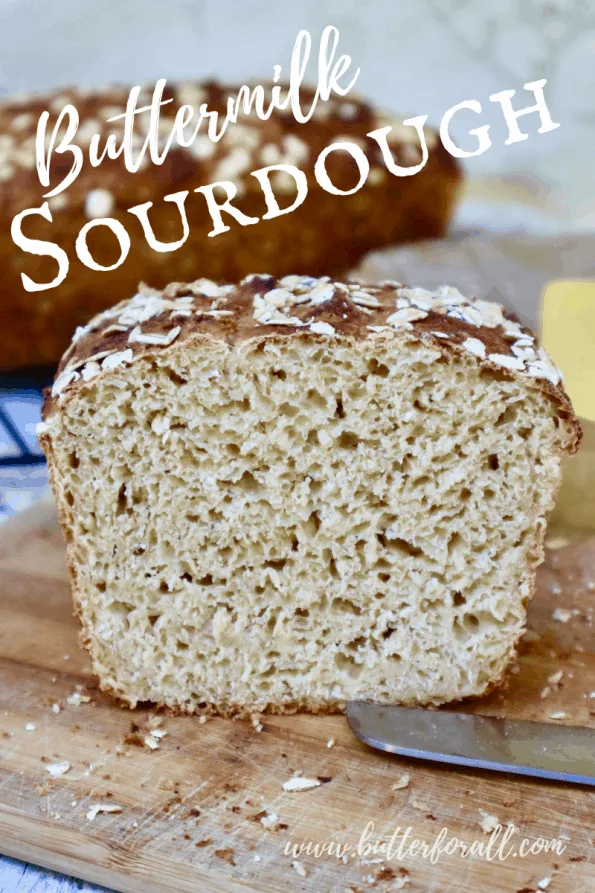
Want To Learn Everything About Sourdough?
Start with this free guide:
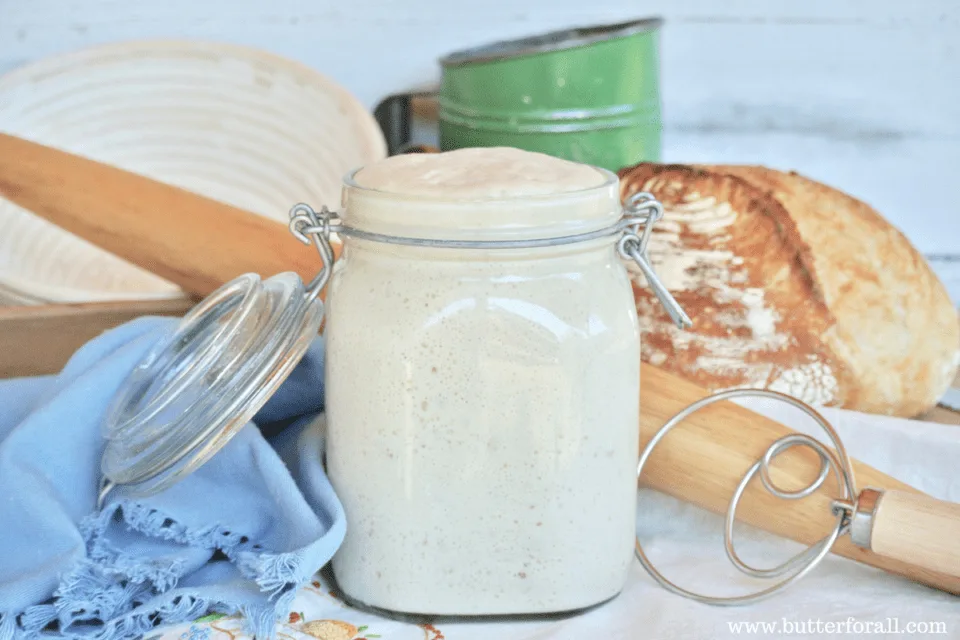

Allyson
Sunday 26th of January 2025
This was one of the best breads I have ever made. Halved it just to see if I was going to like it and I LOVED IT! Will be making a double batch next time. Took it over to my sister's house for our steak dinner and everyone was crazy about it. The crumb is so soft and it will make a great steak sandwich tomorrow with my left over ribeye. I actually did not cut back on the buttermilk but rather added a little more flour to make it a tighter dough as the dough developed. Did 3-4 pulls about 30 minutes apart and then left it out for an overnight BF. Shaped next morning and let it rise until about 1 inch over pan rim and baked away. Thanks for the recipe!
Butter For All
Monday 27th of January 2025
Hi Allyson!
It sounds like you absolutely nailed this recipe. And what a compliment to steak dinner, yum! I'm just so pleased that it was so well received. Thank you so much for your kind feedback. Happy baking!
Sheryl H
Friday 24th of February 2023
I baked one in a Pullman loaf pan and the other in a traditional 9x5. They both turned out beautifully; the difference the Pullman loaf pan made was significant. Now I have to buy another one
Butter For All
Monday 27th of February 2023
Hi Sheryl!
That's great! I'm so glad it was success!
Jennie O
Friday 6th of January 2023
I put together the dough yesterday and seem to have a big fail. All I can think of is my starter wasn’t as ready as I thought. It has been bubbly and sour, but I knew I needed a cup so I didn’t discard. When I tested it from the top it floated. But after I stirred it, it sank in the water. I am not as experienced at this yet, so I went ahead with mixing everything. I started with 75% of the buttermilk and it was really dry so added the rest. The dough was so stiff and heavy. I never could really get the stretch and pull going, but still did my best with it. The house was in the cool side overnight at low 60’s. This morning the dough did not rise as all and still looks heavy and stiff :( Should I just throw it away or anyway to save it?
Butter For All
Wednesday 18th of January 2023
Hi Jennie,
I'm sorry I wasn't able to respond sooner. It sounds like your starter might not be strong enough (YET) for this recipe with all its additions. The buttermilk, oats, and honey can all slow down fermentation so you need a very vigorous and conditioned starter for this particular recipe. And, you may have needed to adjust the hydration by adding extra water. That is something you can always do, it wont hurt the recipe. I can't think of an instance where adjusting shouldn't be done based off instinct. A warmer environment for at least a few hours in the beginning would also be a big benefit to the dough. I'd love to help you get some of the kinks worked out. If you want to do a private consultation I offer 30,60, and 90 minutes. You can take a look at my calendar here.
I know it can be frustrating to feel like you are wasting ingredients and I'm so sorry that happened. I hope you'll try again!
Courtney
Emilee
Sunday 18th of December 2022
What size loaf pans? And when you fold right before putting in pans- fold what direction? Hotdog or hamburger way?
Butter For All
Tuesday 20th of December 2022
Hey Emilee,
The standard 9x5 loaf pans work great for this recipe.
For shaping, you want to fold lengthwise (hotdog) Step 4 and 5 cover this "Divide the dough in half. Shape each half into a loaf. My technique follows: Working one at a time, pat the dough into a rectangle about as wide as the loaf pan. Fold the top third of the rectangle down toward the middle and gently press it down. Then roll the two top thirds over the bottom third. Let the dough rest with the seam side down.
Of course you can shape it however you are comfortable making a regular loaf. I really should get on YouTube and make some shaping videos!
I wish you great success with this recipe!
Courtney
Victoria
Friday 28th of October 2022
I absolutely love the flavor of this bread! I have to score mine or they crack along the side, could this be a sign of underproofing? I thought maybe I had let it rise too long in the pan, but no sign of over proofing when it baked.
Butter For All
Monday 31st of October 2022
Hi Victoria!
It sounds like you are getting a great oven spring. Well done! I think you are doing it just right!